St Kilda, not the wild islands off the coast of Scotland, but the plastic fantastic beach side suburb of Naarm (Melbourne, Australia). Where roller blades and lycra, sunglasses and perfectly manicured Barbie and Ken coiffures, optimistic palm trees and a 1912 amusement park combine to bring a slice of beach capitalism to the southern fringes of the city. What better place to take a secondhand plastic fantastic Holga for a first trial run than St Kilda?
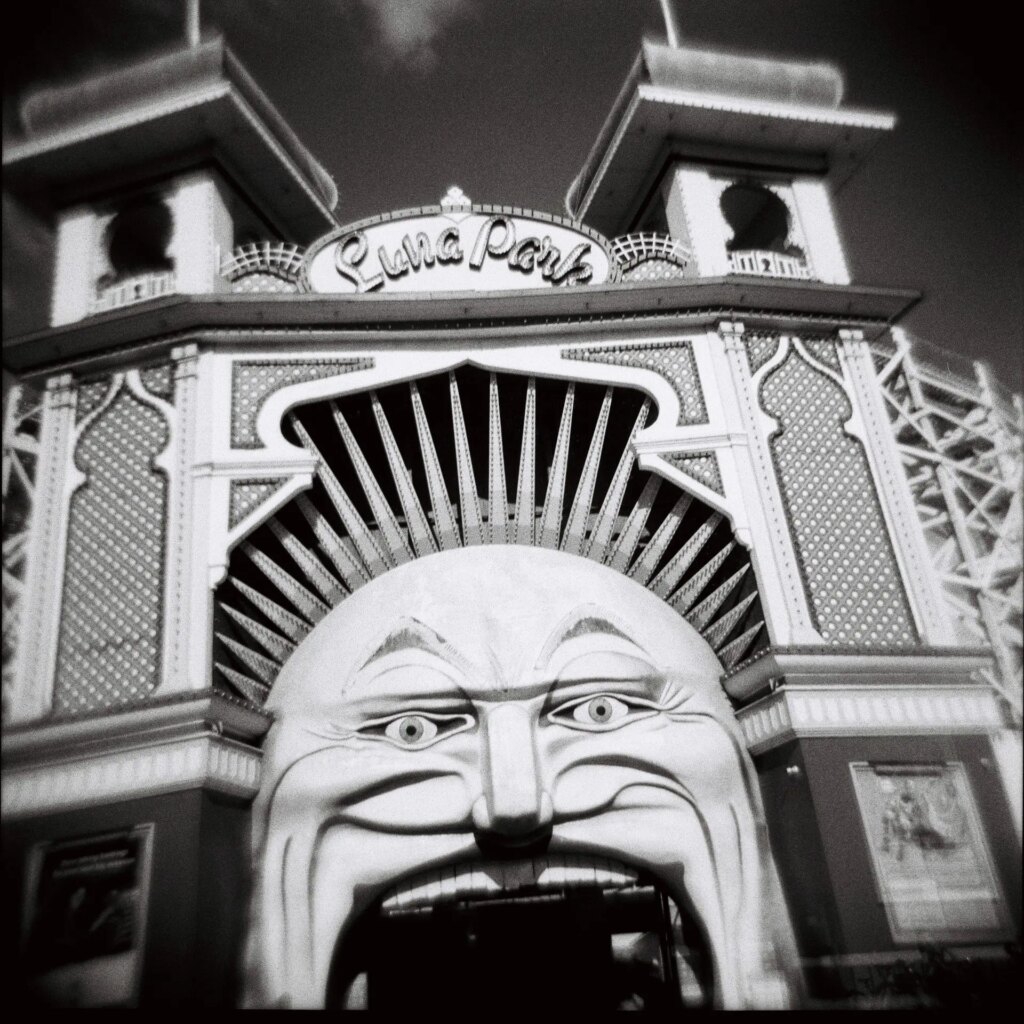
Over a number of years, the aesthetic of the Holga had caught and held my eye. Despite the doubts of Leica owners, photographers of the calibre of David Burnett were using Holga cameras and making extraordinary photographs. The sterile quest for ever sharper sharpness be damned. Particularly now with the advent of digital, those of us drawn to film are often looking for something that is not the asceptic surface of a pixel built photograph filtered and preset to within an inch of its digital life. The Holga takes the desire for film’s inherent wabi-sabi and dials it up to 11.
However, the Holga shows us something deeper than just the imperfection of film. A photograph from a Holga is both a photograph and a simulacrum of the romance of film. Part of its appeal lies in a photographic output you would expect from a toy plastic lens but which contains an echo of photographic history: from the first blurry attempts in the 1800s to the black and white photographs of my grandparents from the mid-twentieth century to the variable focus family and holiday happy snaps of the 1970s and 1980s you find in family photo albums. A Holga photograph is both a photograph and the memory of photography all at once.
So, I bought a Holga 120 CFN, a roll of black masking tape,* a couple of Kodak Tri-X rolls, and took myself down to St Kilda on a sun drenched day. I home developed in Cinestill DF96 B&W Monobath and scanned the negs at Open Labs. To be honest, I bought the camera in 2021, shot the film and developed it in 2021, and then it languished for over a year before I scanned the negatives. Once I got the scans, I promptly ordered more film. One look at these images and I was itching to get out and shoot the Holga again. And, in the final analysis, that is the true test of a camera.
Here are the rest of my 5 frames from a Holga:
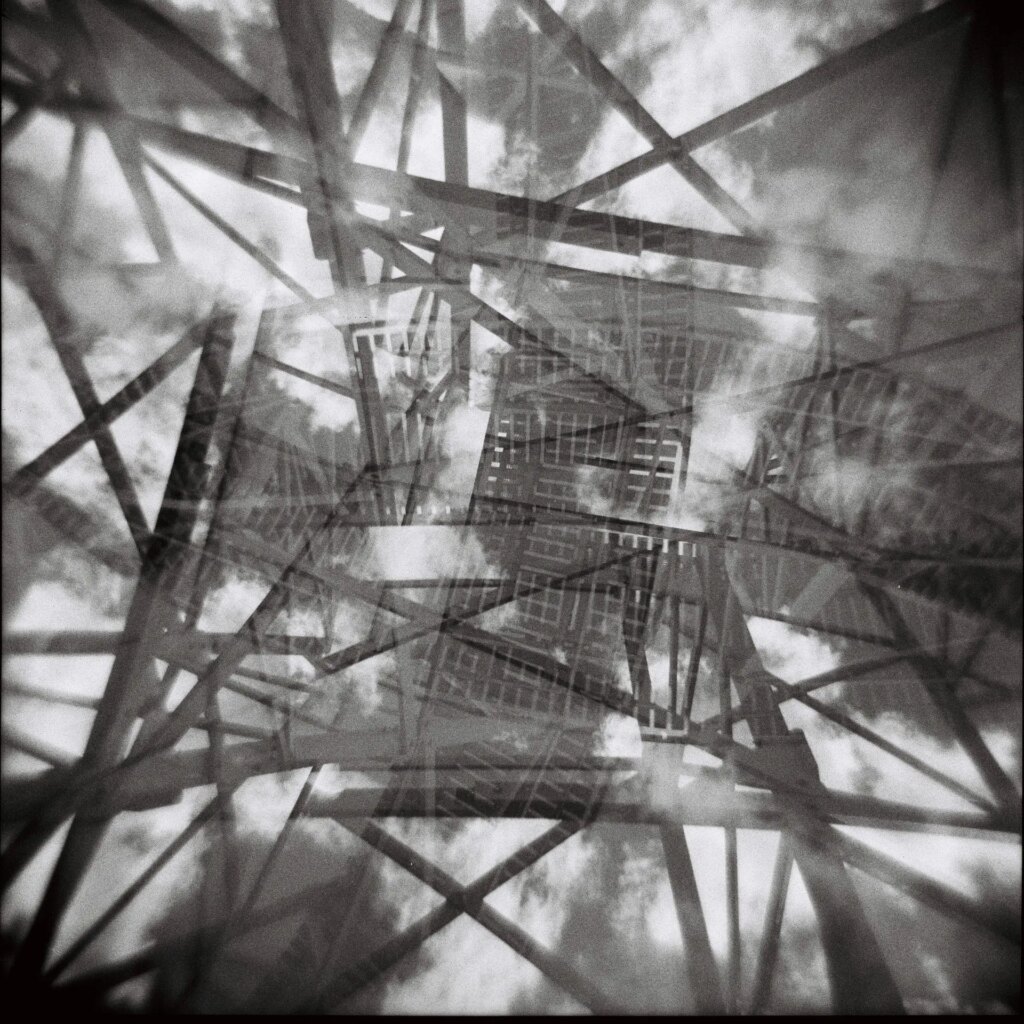
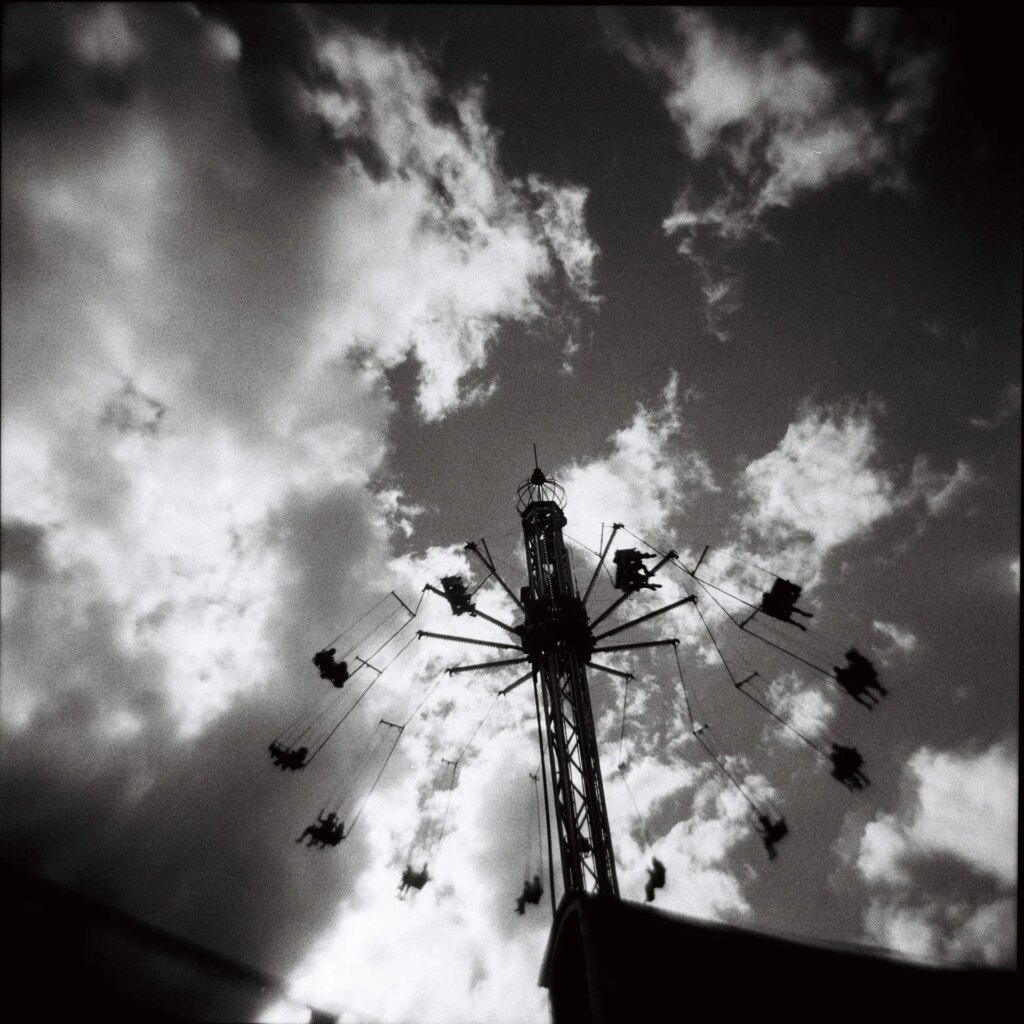
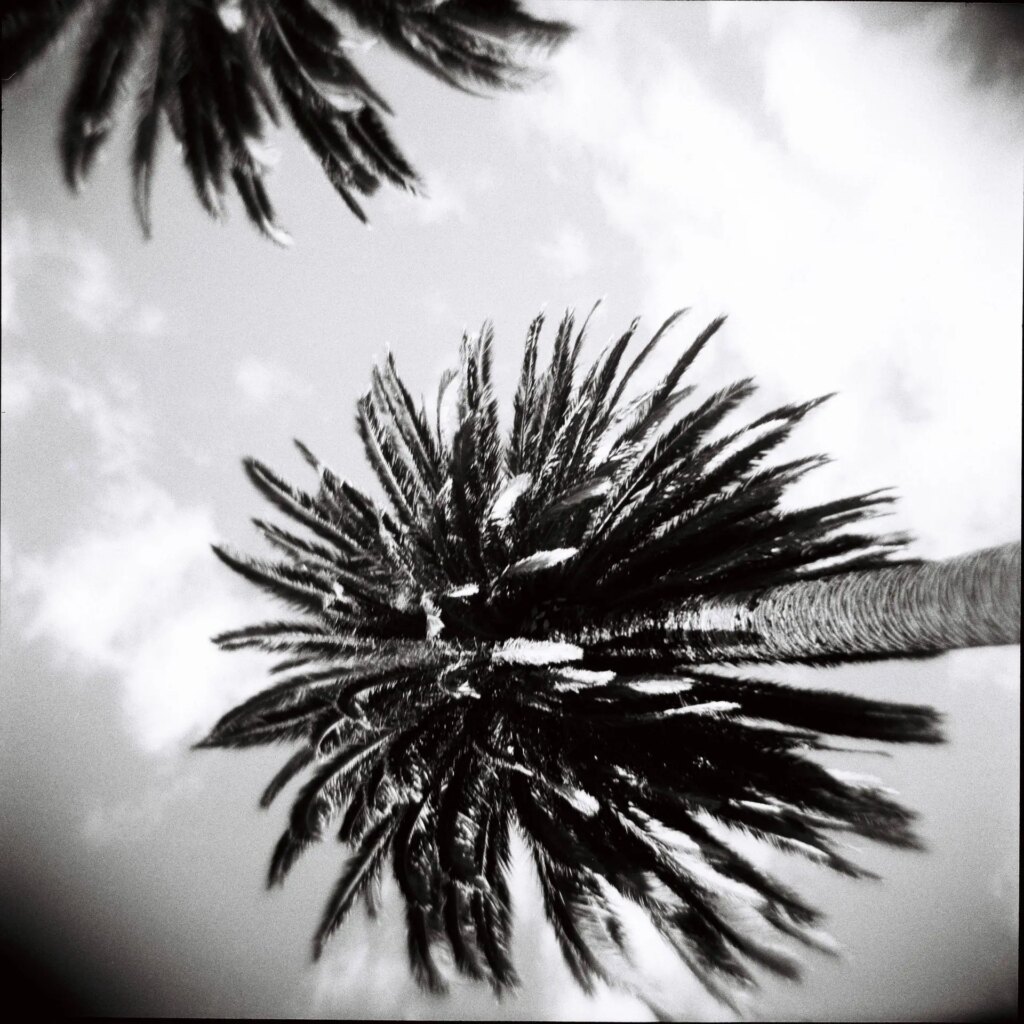
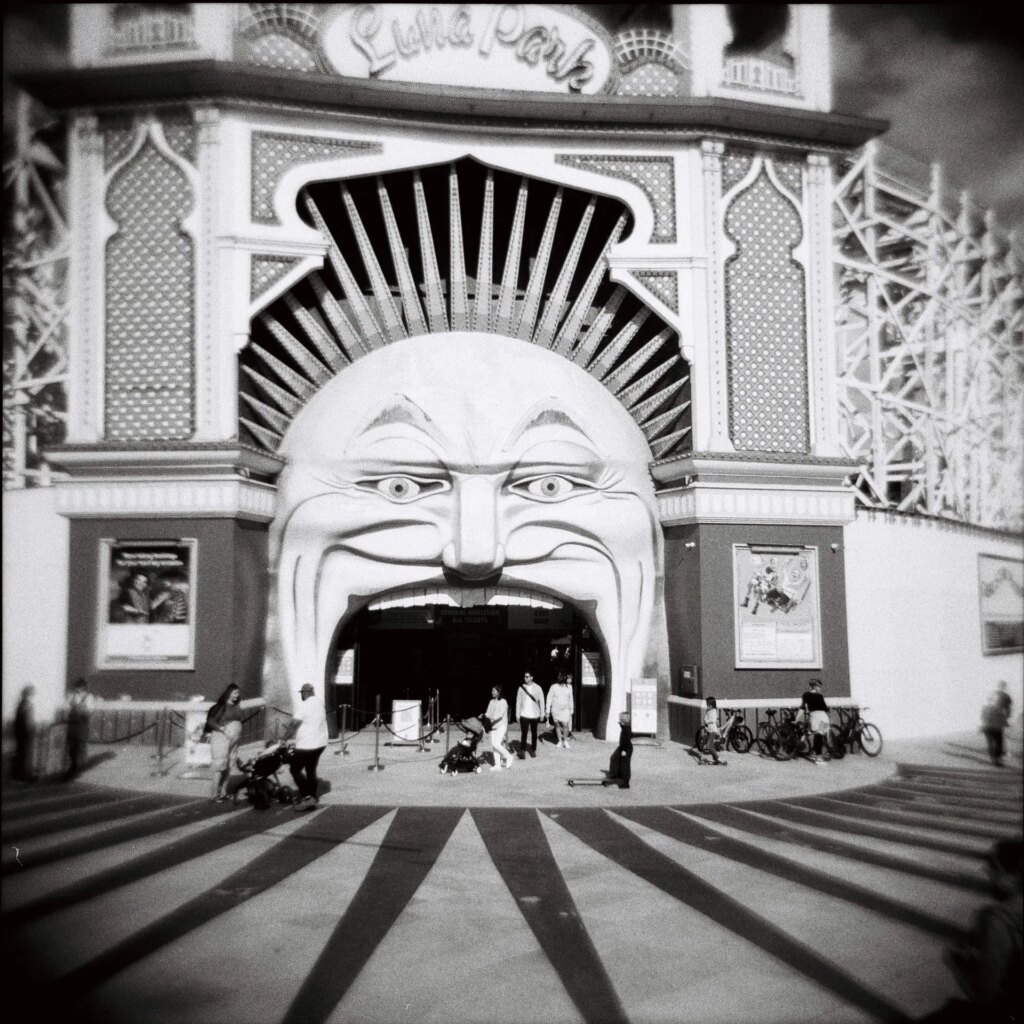
Thanks for reading and checking out my photos. You can see more of my work on my website.
I acknowledge the traditional custodians of the lands these photographs and this article was written on, the people of the Kulin Nations. This land was stolen, never ceded. Always was, always will be, Aboriginal land.
*Sheesh did I learn this lesson the hard way one day. The Holga back will pop open at some inconvenient time and you will lose photos if you don’t tape it up.
Share this post:
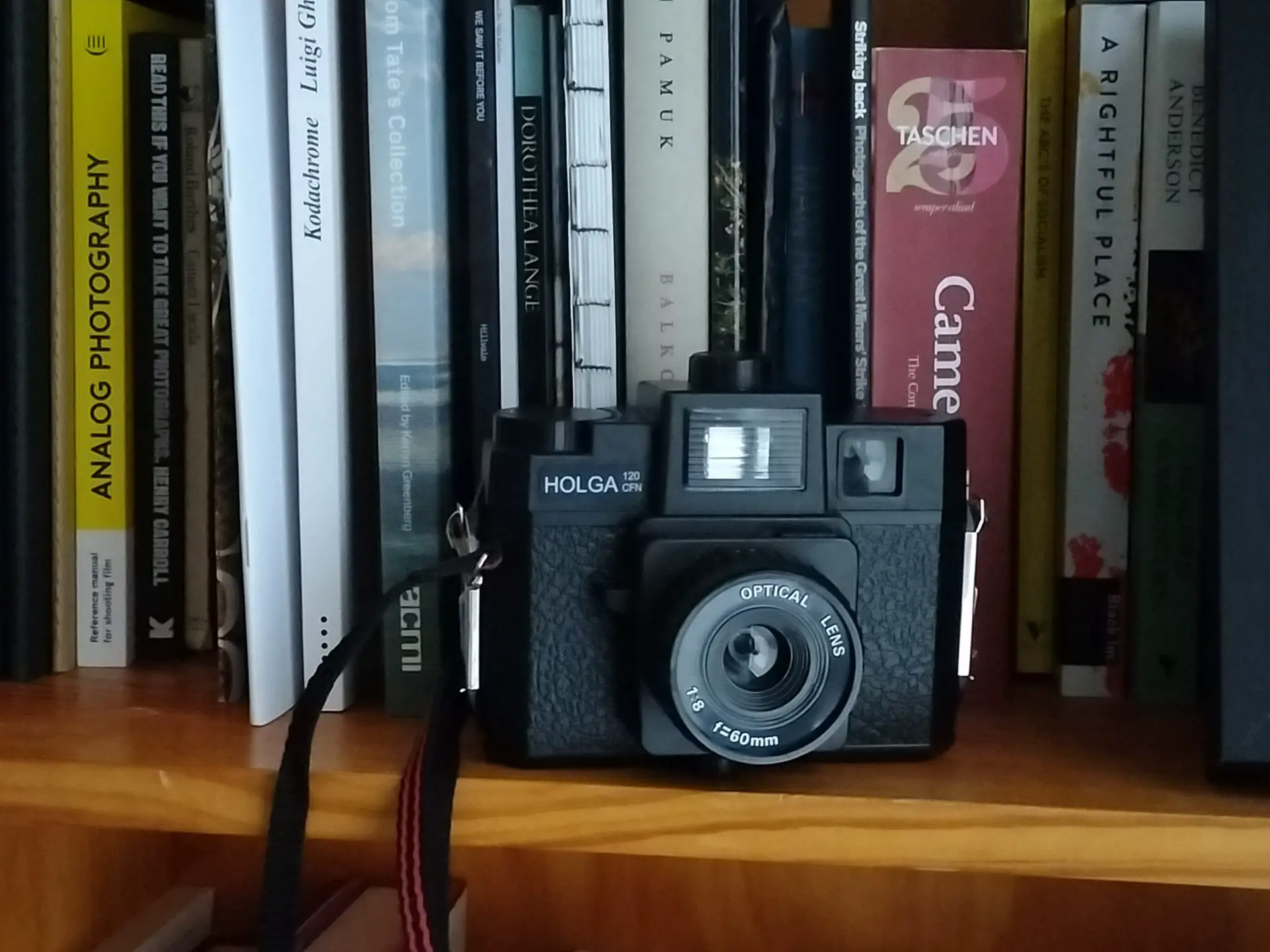








Comments
John Bennett on 5 Frames in St Kilda, Melbourne with a Holga – By Paul Sutton
Comment posted: 02/02/2023
When I see great photos like yours, though, I realize that all I *really* need is a couple of Holgas,
some Kodak Tri-X 120 roll film, and maybe an Olympus OM-1n for 35mm work, and I'm "all good."
Comment posted: 02/02/2023
Comment posted: 02/02/2023
Comment posted: 02/02/2023
Fred Nelson on 5 Frames in St Kilda, Melbourne with a Holga – By Paul Sutton
Comment posted: 02/02/2023
I do love the old time feel of the pictures.
Daniel Castelli on 5 Frames in St Kilda, Melbourne with a Holga – By Paul Sutton
Comment posted: 02/02/2023
Everything you said about the Holga is true. Here's my Holga story:
Ten years ago, I retired from public school teaching (US). I taught photography, graphic design & architectural drawing. My school system was lower middle-class, Because of that, photography was still analog. Full functional darkroom & support lab, with one Epson scanner (I had to buy it).
I had a couple of kids who needed a full credit for graduation and wanted to take my photo class. Classes were full, so we arranged an independent study class for both of them. They were terrible - all thumbs w/a SLR, trouble with subject selection, etc.
A local camera store (now defunct) 'permanently loaned' two Holga 120 format cameras with flash. I gave them to the students, and they blossomed! Freed from dials & f/stop rings, they turned into a couple of arty shooters. They scanned their negs, got some inexpensive inkjet photo paper and mounted a photo show at the local library. I was so happy they found a visual niche. I lost touch with them after HS graduation, and I retired soon after that. The families credited me for their success, but I disagreed. Other than a few tips on composition and teaching them darkroom skills, it was all their doing. The Holga just opened up the door to their creativity. The Holga camera removes technical obstacles, but still requires process.
I know people say an iPhone delivers the same results, but film involves process and hands-on manipulation to arrive at a finished print. The iPhone doesn.t.
CHRISTOF RAMPITSCH on 5 Frames in St Kilda, Melbourne with a Holga – By Paul Sutton
Comment posted: 02/02/2023
Paul Sutton on 5 Frames in St Kilda, Melbourne with a Holga – By Paul Sutton
Comment posted: 04/02/2023
Scott Gitlin on 5 Frames in St Kilda, Melbourne with a Holga – By Paul Sutton
Comment posted: 07/02/2023
Comment posted: 07/02/2023
Wouter on 5 Frames in St Kilda, Melbourne with a Holga – By Paul Sutton
Comment posted: 09/02/2023
Love the results you're getting from you Holga. So far, I'm still in early days with mine, but absolutely loving it for what it is. I did a little write up here actually: https://www.ww-web.nl/fun-with-plastics/
Comment posted: 09/02/2023